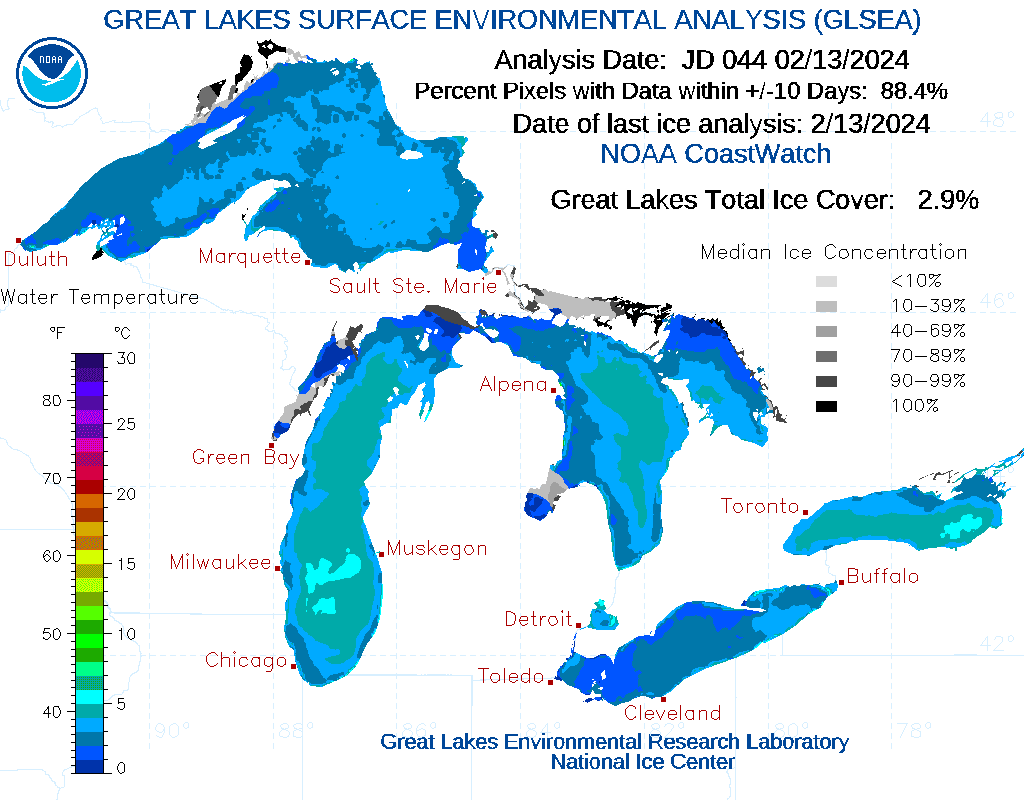Great Lakes ice cover at record low for this time of winter
Water, water everywhere — and that's not how the Great Lakes usually look in mid-February.
The five lakes stood at 2.92% ice cover as of Tuesday. Based on ice-cover records going back to 1973, they're usually at about 40% ice coverage collectively at this time of year.

"We are at a historic low for ice cover for the Great Lakes as a whole,” said Bryan Mroczka, a physical scientist at the National Oceanic and Atmospheric Administration's Great Lakes Environmental Research Laboratory in Ann Arbor.
“We have never seen ice levels this low in mid-February on the lakes since our records began in 1973.”
As of Tuesday:
Lake Superior was at 2.31% ice cover.
Lake Michigan was 2.88% ice cover.
Lake Huron was at 5.72% ice cover.
Lakes Erie and Ontario were essentially ice-less, as was non-great Lake St. Clair.
Jia Wang, an ice climatologist at the laboratory, told the Free Press earlier this month that a lower amount of ice coverage was expected this winter due to a strong "El Niño," a condition of warmer-than-usual surface sea temperatures in the Pacific Ocean that influences weather patterns over North America, as well as two other weather-impacting sea temperature phenomena in both the Atlantic and Pacific oceans pointed toward warmer conditions over the Great Lakes.
More: No-snow December followed by rainiest January on record
Winter began with very warm temperatures, slowing ice formation. A frigid week or two in January gave way to warm air again, continuing to hold back ice development. The maximum ice cover reached this year on the Great Lakes was between 15% and 20% in the third week of January. Great Lakes' basin-wide maximum ice cover usually occurs around the end of February or the beginning of March and is on long-term average about 53%.
In addition to impacting local economies tied to winter activities such as ice fishing, a lack of winter ice can increase shoreline erosion, as waves brought on by strong winter winds are free to pound the shores.
The ice cover records are likely to continue to fall; the National Weather Service's climate outlook for February into April calls for higher-than-normal temperatures and lower-than-normal precipitation in the Great Lakes region.
Contact Keith Matheny: kmatheny@freepress.com.
This article originally appeared on Detroit Free Press: Great Lakes ice cover at record low for this time of winter
